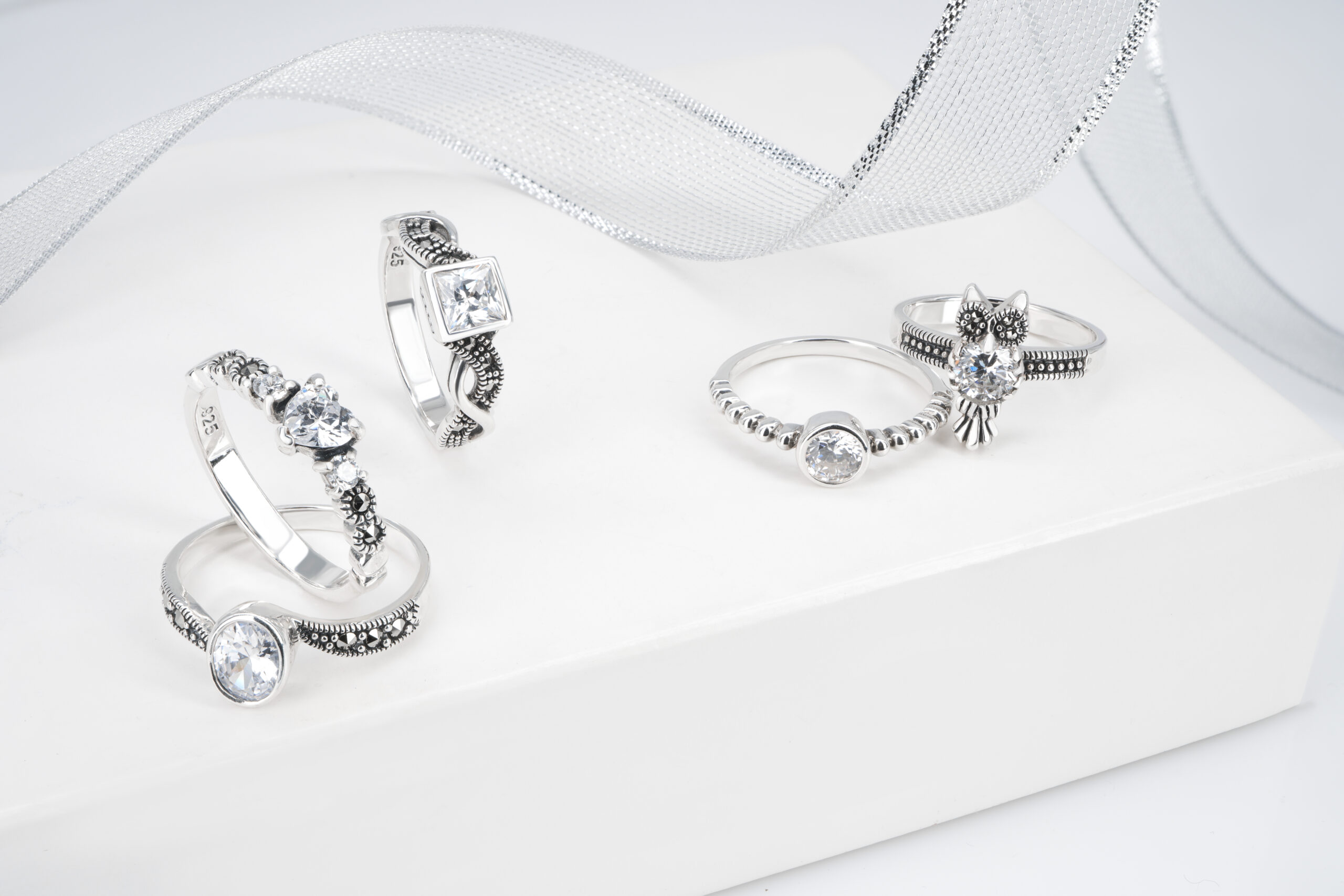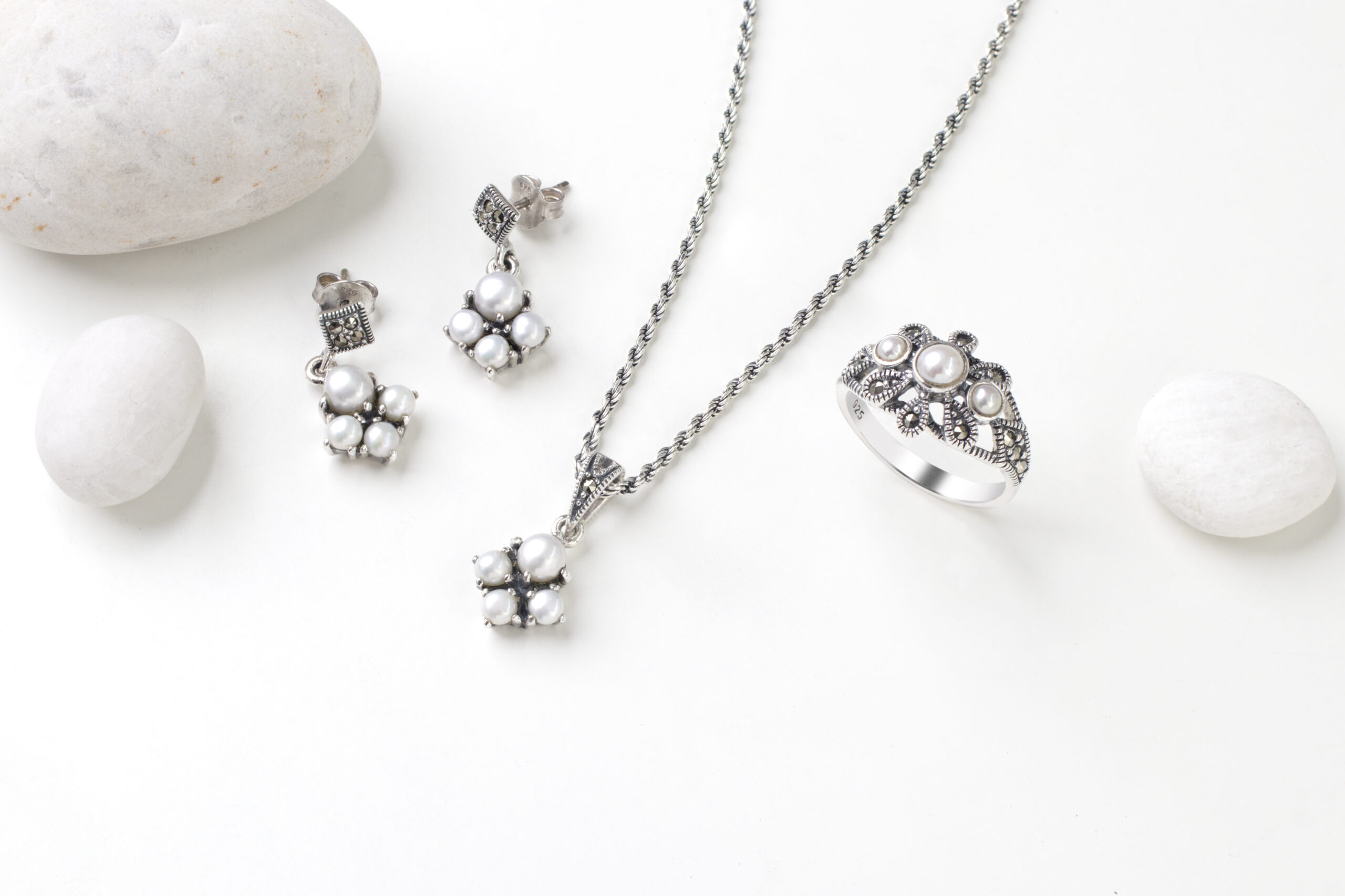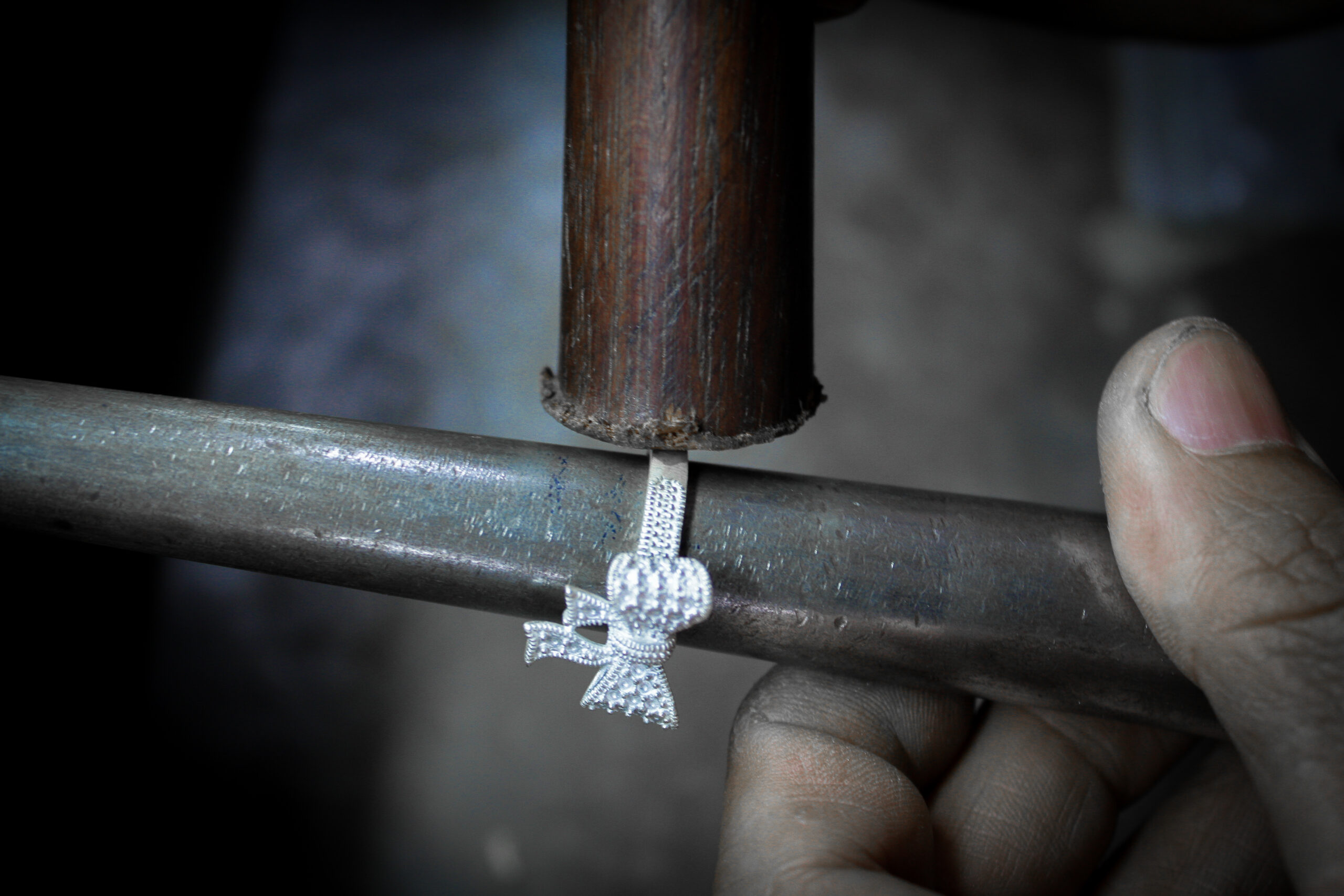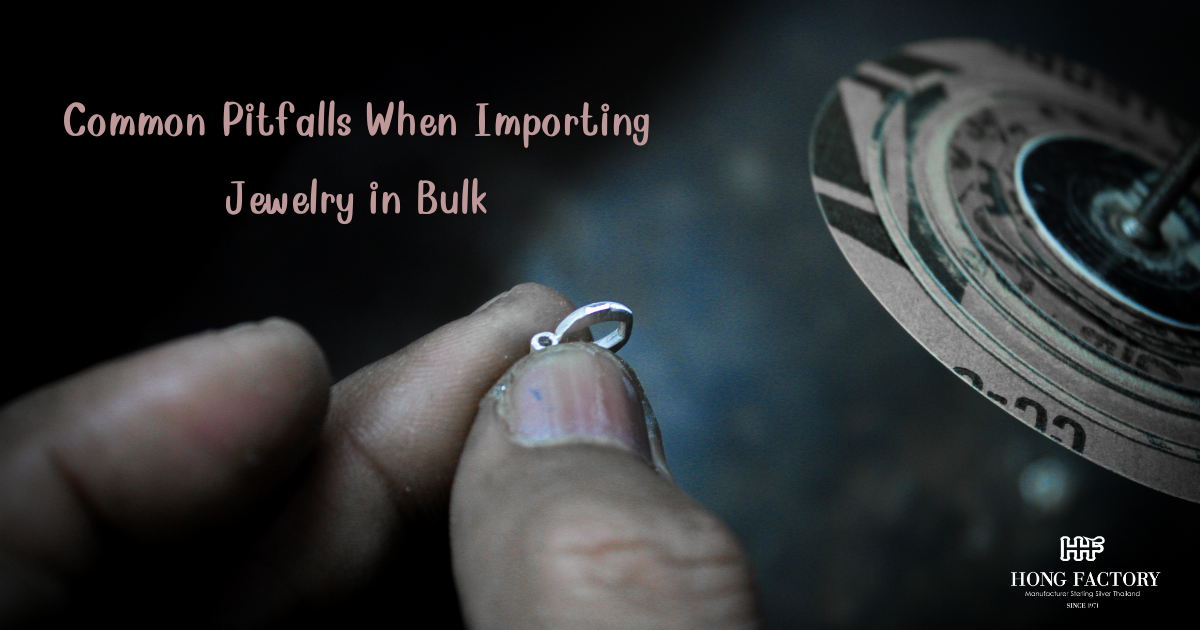Importing jewelry in bulk offers exciting opportunities for retailers, resellers, and private label brands but it also comes with complex challenges that can impact profit, timelines, and brand reputation.
Whether you’re importing from Thailand, India, China, or another manufacturing hub, avoiding the most common mistakes is critical. This guide explores the key pitfalls businesses face when importing jewelry at scale and how to sidestep them to ensure smoother operations and better outcomes.
Common Pitfalls When Importing Jewelry in Bulk

Underestimating Lead Times
The Pitfall:
Assuming all orders will be completed and delivered within 2–3 weeks, even during busy seasons.
The Reality:
Production, quality control, and international shipping add layers of complexity. Custom orders can take 30–60 days, especially with gemstone sourcing or custom molds.
How to Avoid It:
- Plan at least 2–3 months ahead for peak seasons
- Confirm timelines with your supplier early
- Ask about national holidays in the supplier’s country (e.g., Songkran, Diwali, Chinese New Year)
Incomplete or Unclear Product Specifications
The Pitfall:
Sending vague descriptions or inspiration images without specific technical details.
The Risk:
Results in miscommunication, incorrect production, and costly rework.
How to Avoid It:
- Use clear CAD files or technical sketches
- Specify materials, dimensions, stone settings, and finishing
- Confirm all details in writing before sampling or production
Ignoring Quality Control Processes
The Pitfall:
Trusting that every product will meet standards without inspection.
The Consequences:
Receiving inconsistent pieces, poor craftsmanship, or tarnished items—all of which impact your brand’s reputation.
How to Avoid It:
- Request pre-shipment photos or video inspections
- Hire a third-party QC team if ordering in high volume
- Ask for a quality checklist from the supplier and review it

Misunderstanding Duty and Tax Regulations
The Pitfall:
Not researching the import duties and taxes for your destination country.
The Risk:
Unexpected costs at customs that eat into your margins or delay delivery.
How to Avoid It:
- Check your country’s HS codes and duty rates for jewelry items
- Factor in VAT, GST, or sales tax where applicable
- Work with a customs broker for large shipments
Overlooking Packaging Requirements
The Pitfall:
Assuming the supplier will provide branded or protective packaging by default.
The Issue:
Receiving bulk jewelry in plastic bags or non-retail-ready form.
How to Avoid It:
- Specify packaging requirements in your PO (e.g., gift boxes, pouches, inserts)
- Request samples of packaging before approval
- Budget for additional packaging if needed
Placing Large Orders Without Sampling First
The Pitfall:
Ordering 1,000+ units of a new SKU without testing a sample.
The Danger:
Receiving bulk items that don’t meet your quality expectations—or aren’t popular with your audience.
How to Avoid It:
- Always request physical samples before full production
- Test market reaction through a soft launch or preorder model
- Start with a small MOQ (minimum order quantity) and scale gradually

Choosing the Wrong Shipping Method
The Pitfall:
Opting for the cheapest shipping option without considering time sensitivity or reliability.
The Risk:
Delays, damage in transit, or difficulty tracking bulk shipments.
How to Avoid It:
- Use express couriers (DHL, FedEx) for smaller high-value shipments
- Consider air cargo for mid-size orders, sea freight for large volumes
- Factor in insurance, tracking, and delivery guarantees
Ignoring Cultural and Design Differences
The Pitfall:
Assuming local tastes align with the supplier’s interpretation of design.
The Result:
Receiving designs that may be too ornate, too plain, or culturally mismatched for your market.
How to Avoid It:
- Provide clear visual references and style guides
- Share customer persona insights with your supplier
- Start with universal motifs and test niche concepts later
Poor Communication with the Supplier
The Pitfall:
Infrequent communication or relying on assumptions without confirmation.
The Risk:
Misunderstandings, production delays, and order errors.
How to Avoid It:
- Set regular check-ins via email or chat (e.g., weekly updates)
- Summarize all calls in writing for mutual clarity
- Use project management tools or shared documents when needed

Not Having a Backup Plan
The Pitfall:
Relying entirely on one manufacturer or shipping route.
The Problem:
If something goes wrong (natural disasters, strikes, factory errors), your business stalls.
How to Avoid It:
- Vet and onboard at least two reliable suppliers
- Diversify your logistics options
- Maintain a buffer stock for best-selling SKUs
Import with Intention
Importing jewelry in bulk can unlock massive opportunities for margin growth and brand expansion but only when managed properly.
Avoiding these common pitfalls means being proactive, detail-oriented, and building strong relationships with your suppliers. Sample before scaling, communicate consistently, and always plan for delays. Because in the world of bulk jewelry importing, smart preparation is the most valuable asset you can carry.
